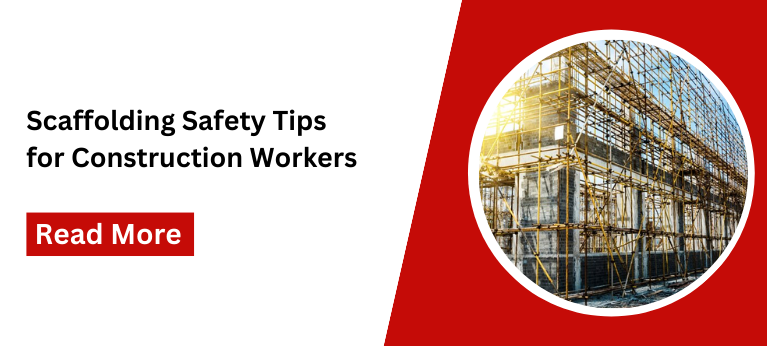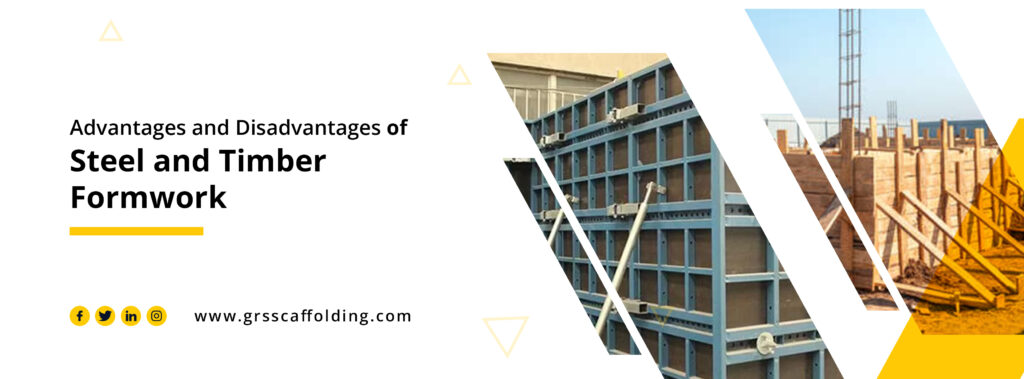Scaffolding is an essential component in construction, providing a safe and stable platform for workers to perform their tasks at height. However, improper use of scaffolding can lead to serious accidents and injuries. This blog post aims to educate construction workers and site managers on essential scaffolding safety tips to ensure a safe working environment.
Understanding Scaffolding Types and Components:
Different Types of Scaffolding:
- Supported Scaffolding: This type of scaffolding is built from the ground up and is typically used for tasks that require a stable platform. It is widely used in general construction.
- Suspended Scaffolding: Suspended from the roof or a higher structure, this type is used for tasks that require access to high areas, such as window washing or painting high-rise buildings.
- Rolling Scaffolding: Equipped with wheels, rolling scaffolding allows for easy movement and is used for tasks that need frequent repositioning, like interior painting or drywall installation.
Key Components:
- Standards, Ledgers, and Transoms: These are the vertical, horizontal, and cross-sectional supports of the scaffold.
- Base Plates and Mud Sills: These provide a stable foundation and distribute the load evenly.
- Braces, Couplers, and Decking: Essential for the structural integrity and the working surface of the scaffold.
Pre-Use Inspection and Setup:
Inspection Checklist:
- Check for any damage or defects in scaffolding components before use.
- Ensure all parts are free from rust, cracks, and other forms of deterioration.
- Verify that all locking mechanisms and braces are functioning correctly.
Proper Setup Procedures:
- Establish a stable and level foundation using base plates and mud sills.
- Assemble scaffolding components securely, following manufacturer guidelines.
- Ensure the load capacity is sufficient for the intended use and evenly distribute weight across the structure.
Training and Certification:
Importance of Proper Training:
- All workers using scaffolding must undergo comprehensive training covering setup, inspection, and safe usage.
- Training ensures that workers understand the risks and know how to mitigate them effectively.
Certification Programs:
- Look for reputable certification programs such as those offered by OSHA or similar regulatory bodies.
- Certified workers bring a higher level of safety and professionalism to the site.
Personal Protective Equipment (PPE):
Essential PPE for Scaffolding Work:
- Hard Hats: Protect against head injuries from falling objects or bumps.
- Harnesses and Fall Protection Gear: Critical for preventing falls, especially when working at significant heights.
- Non-slip Footwear and Gloves: Provide better grip and reduce the risk of slips and falls.
Proper Use and Maintenance of PPE:
- Regularly inspect PPE for signs of wear and tear, and replace damaged items immediately.
- Ensure PPE fits correctly and is worn properly at all times.
Safe Work Practices:
Guidelines for Working on Scaffolding:
- Always maintain three points of contact (two hands and one foot, or two feet and one hand) when climbing scaffolding.
- Avoid overreaching or leaning out from the scaffolding; instead, move the scaffold as needed.
- Keep the work area organized and free of debris to prevent trips and falls.
Weather Considerations:
- Do not use scaffolding in adverse weather conditions such as high winds, heavy rain, or ice.
- Take extra precautions in hot or cold weather to prevent heat-related illnesses or frostbite.
Load Management:
Understanding Load Limits:
- Adhere strictly to the scaffolding’s load capacity, which includes the weight of workers, tools, and materials.
- Overloading can lead to structural failure and serious accidents.
Proper Distribution of Loads:
- Distribute weight evenly across the scaffold to maintain stability.
- Use load-bearing components appropriately to ensure safety.
Emergency Preparedness:
Emergency Response Plan:
- Develop a clear and detailed emergency response plan that includes procedures for scaffolding-related accidents.
- Train all workers on the plan and conduct regular drills to ensure readiness.
Equipment for Emergencies:
- Keep first aid kits readily available on site.
- Ensure easy access to emergency communication devices, such as phones or radios.
Conclusion:
By following these scaffolding safety tips, construction workers can significantly reduce the risk of accidents and injuries. Safety should always be the top priority on any job site, and implementing these practices will help create a safer working environment.



